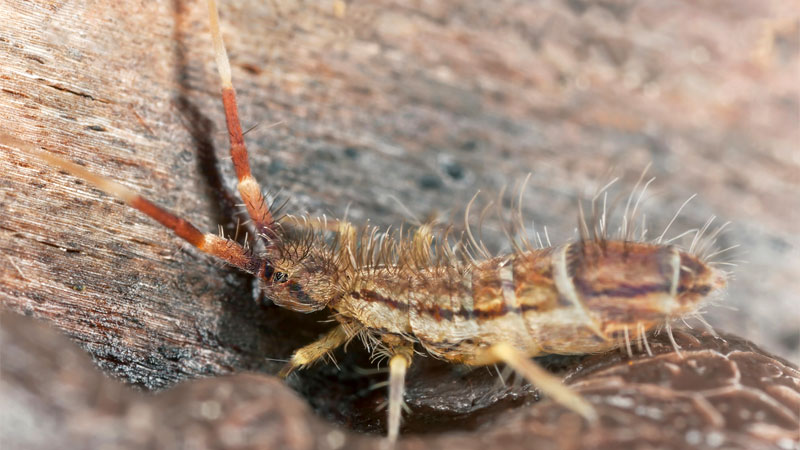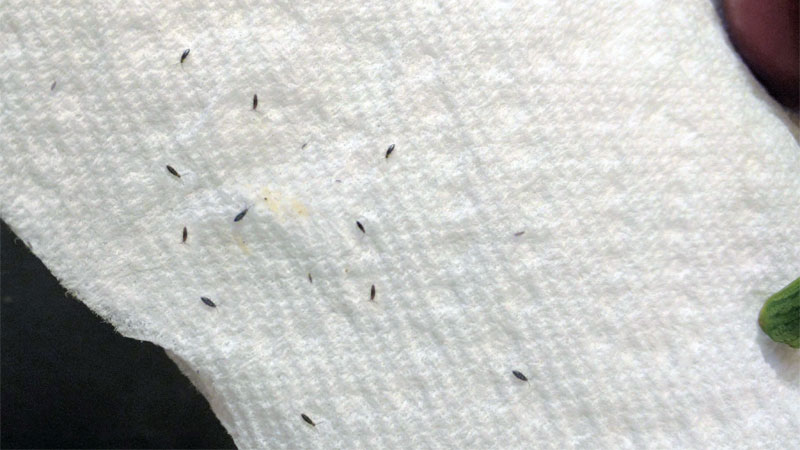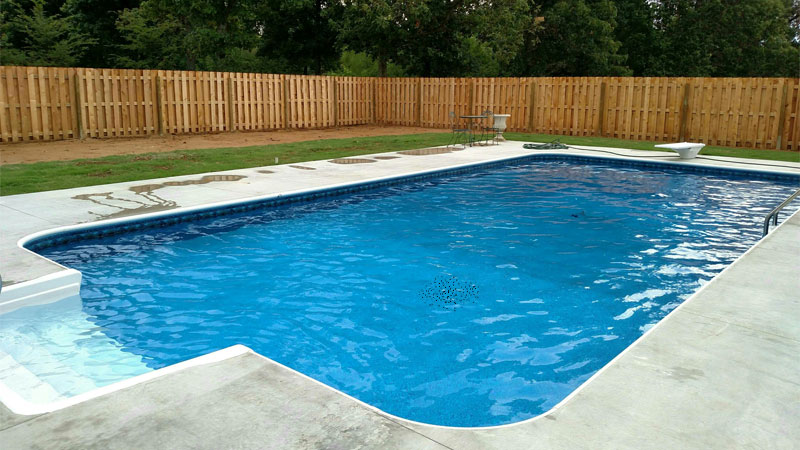One of the most notorious legends in Victorian England was a manlike creature called Spring-Heeled Jack. This creature resembled a tall, thin human with clawed hands and terrorized the countryside for more than 60 years.
But what gave Jack his name was the ability to leap impossible heights to evade capture. In the insect world, there are a few critters which have a similar reputation, but one in particular deserves better.
The springtail earns its reputation for the incredibly high jumps it makes when startled or in danger. However, this ability to spook the unsuspecting doesn’t mean they’re malicious.
Keep reading to learn about these tiny athletes, how to get rid of springtails from your home or pool, and keep them from coming back.
Getting to Know Springtails
Springtails are a beneficial critter that’s earned a negative reputation due to their ability to leap into the air far enough to be small puddle jumpers. They actually have their own sub-class called Collembola.
What Are Springtails?
These critters are not actually insects, but one of three groups of hexapod. They have a long forked tail-like structure called a furcula. When startled, they rapidly unfurl the furcula, causing them to leap up to four inches.
Springtails range from 1/16 to 1/4 inches long and have up to six segments. They tend to be white or grey, with some species coming in a range of colors from red to purple to yellow.
One of the most common types is the winter springtail (Hypogastrura harveyi and Hypogastrura nivicola), sometime called a “snow flea”.
See Also: How to Get Rid of Thrips From Your Home or Garden
Where do Springtails Live?
Springtails are most often found in places with excess moisture. Outdoors, this can be the moist soil of your lawn or garden. Indoors, they may be found in the crawl spaces under your home, in the basement, or in the kitchen or bathroom.
What Do Springtails Eat?
Springtails are omnivores, but prefer mold and fungi over other forms of organic matter.
Do Springtails Bite?
These critters have internal mouthparts and neither sting nor bite.
Are Springtails Harmful to Pets?
Springtails pose no danger to pets.
Springtails vs Fleas
While springtails were originally mistaken for fleas due to their similar jumping skills, there’s very little actual resemblance between the two.
Fleas are small black bugs that live parasitically in the fur of host animals and can cause anemia or even death, as well as transmitting diseases. Meanwhile, springtails are harmless to humans and animals and have a rounder body with multiple segments.
Getting Rid of Springtails
Even though springtails are harmless, their presence suggests more pressing problems. It’s important to find the cause of a springtail infestation. Removing the cause will generally cause the springtails to leave on their own.
Eliminate the Cause to Eliminate the Bugs
Springtails have bodies that easily dry out and feed primarily on mold and fungus, so they’re naturally drawn towards moisture. These tiny jumping bugs may appear in your basement, kitchen, bathroom, or other damp environments where there is often a higher humidity.
Spotting them in the bedroom or another room lacking a water source could be a sign of a roof leak or other major problem. You will need to check the area around where the infestation is occurring for signs of moisture or water damage.
Repair any leaky pipes and, if needed, hire a professional to repair any signs of water damage. Without a source of food and water, the springtail infestation will vacate on their own.
Springtails and Plants
You’ll sometimes see springtails gather around potted plants. This is due to the damp soil, and may be an early warning sign of fungal root rot.
Having springtails in the garden can be quite beneficial, as they will attack any fungal infections without harming the plant itself. Natural predators, such as spiders and lizards help keep the outdoor population under control.
However, you might not want them hanging around your houseplants. Neem oil can help eliminate both the springtails and any fungi.
Be warned that spotting springtails around a houseplant may mean the plant pot is oversaturated. Try switching your watering habits to the soak-and-dry method (which is recommended for most houseplants). This method is nearly foolproof and ensures your plants always have just the right amount of moisture.
See Also: How to Kill Mealybugs On Plants
Should You Kill Springtails?
Killing a springtail infestation won’t eliminate the underlying problem. In the case of mold or fungus, the situation could actually become worse without the springtails there to feed on the spores.
However, you may choose to use some remedies to keep an indoor infestation under control until you can handle the real problem.
Insecticides will allow you to get the population under control quickly but are a health risk when used around children and pets. Better solutions are diatomaceous earth and contact sprays made with neem oil.
These are safe for use around both humans and animals and can kill springtails and other pests including spider mites and ghost ants without the risk of creating superbugs.
Getting Rid of Springtails From Your Home
Dealing with water damage can be expensive, but thankfully there’s a way to help reduce mold, fungus, and springtails while saving up for repairs.
Simply get some cleaning grade white vinegar and wipe down any surfaces where the springtails gather. The vinegar will kill all three of these things on contact, although your house might smell like a salad for a few days.
Window sills can be a common gathering spot in the summer, so be sure to wipe them down regularly. While you’re at it, check the caulking and window screens and repair them if needed.
Note that on some rare occasions, springtails may infest the wall voids. This tends to occur if you have leaky siding or other water damage. Obviously, you will want to get this damage repaired immediately so you don’t run the risk of permanent structural damage.
Getting Rid of Springtails from the Yard
It might be surprising to have one of these critters rocket into the air while you’re mowing the lawn. Thankfully, this is one of the easiest places to remove them (in most cases). Remember, springtails need moist conditions, and there are a few things in the yard that can provide this.
Plant debris and mulch will help keep the soil from drying out, giving springtails a place to hide. By keeping your yard clean of debris, this problem is greatly reduced.
Another moisture-prone area in the yard is underneath wood decks. You can full this area with pea gravel to ensure good drainage and eliminate the normally damp conditions.
Finally, wood piles and compost heaps not only have a higher moisture content, but the latter is chock full of organic materials. Try keeping the wood piles elevated (which also deters garter snakes, lizards, and other creepy crawlies).
As for the compost heap, the best solution is to either keep it in a sealable container or let the springtails in. After all, they feed on mold and fungus and will help speed decomposition.
Getting Rid of Springtails From Your Swimming Pool
Pools can be a source of bacteria when not properly chlorinated or allowed to sit stagnant. Furthermore, the moist environment around a pool that isn’t drained can create perfect breeding grounds for mosquitoes, no-see-ums, and a whole host of other nasties.
Keeping the pool drained and covered when not in use will discourage an infestation of springtails and prevent a wide range of nuisance pests from gathering in your pool.
Will Springtails Go Away on Their Own?
As mentioned, springtails are a symptom, not the problem. Removing any signs of fungus or mold will eliminate the need for springtails. Eliminating sources of excessive moisture will cause adult springtails to migrate back outside voluntarily.
The good news is that this means you don’t need any fancy gadgets to get rid of them. However, if you find the springtails are refusing to leave, you may wish to contact a pest control professional and request an inspection. There may be moisture issues you’ve missed.
- How to Get Rid of Hawks - March 8, 2024
- How to Get Rid of Pill Bugs (Rolly Pollies) - March 1, 2024
- How to Get Rid of Groundhogs (Woodchucks) - February 5, 2024


 Just tell me how to get rid of ’em.
Just tell me how to get rid of ’em.



Do springtails get and live in your scalp?
I have heard of instances where springtails were discovered in peoples’ hair and scalps. Here’s a good article on it: https://www.headlice.org/comb/tiny-bugs-wreak-havoc-report-of-collembola-as-human-parasites-supports-recent-research-findings/
Also keep in mind that body lice look fairly similar to springtails.